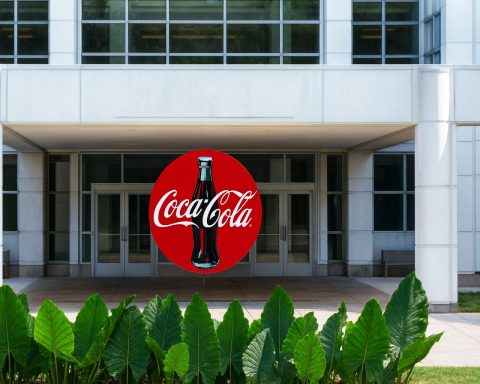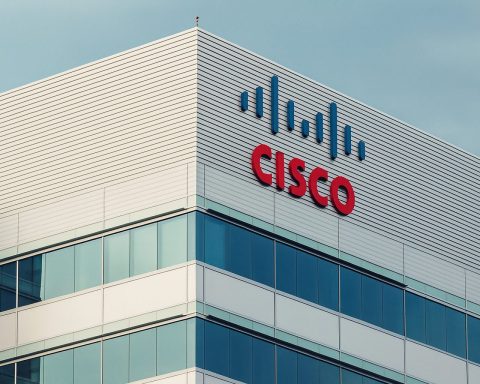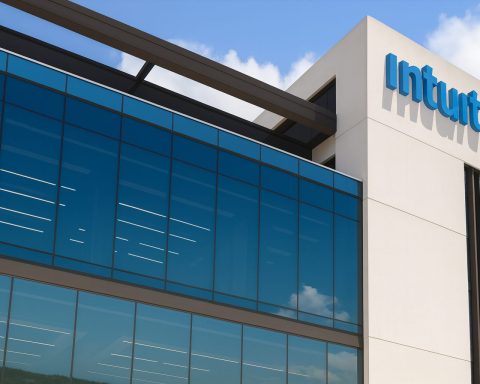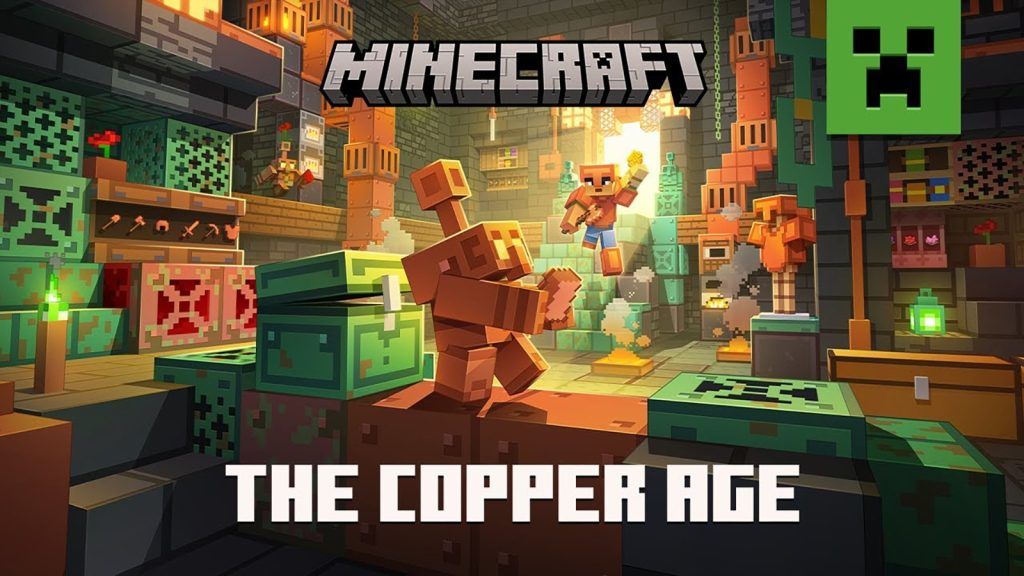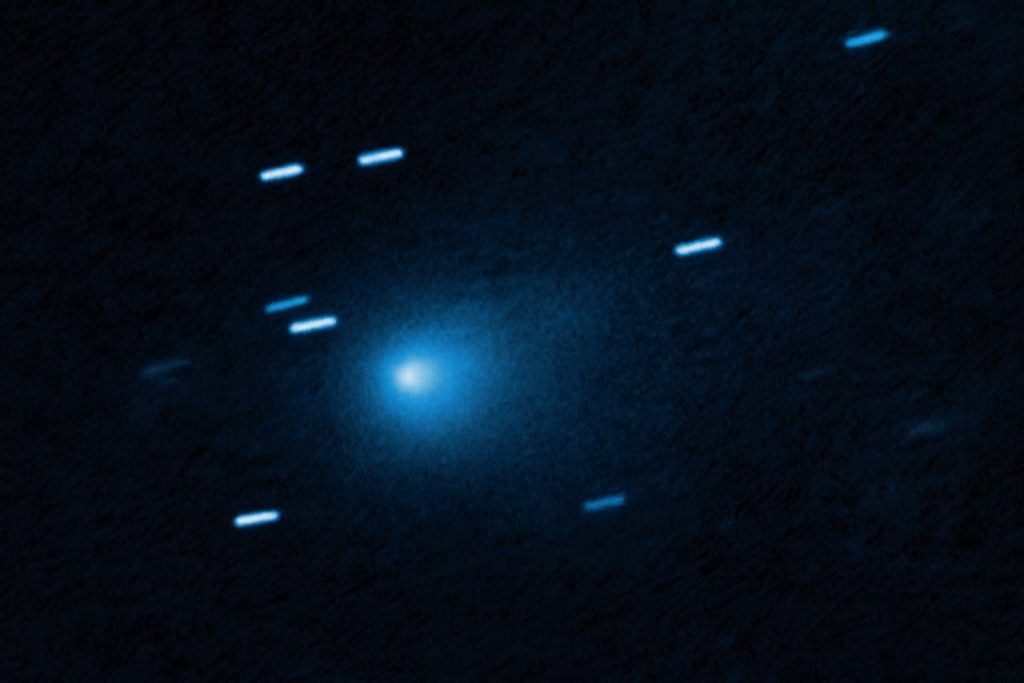- Big News: The U.S. Department of Energy (DOE) will acquire a 5% equity stake in Lithium Americas (LAC) and another 5% in its Thacker Pass lithium mine joint venture with General Motors [1]. Energy Secretary Chris Wright confirmed on Bloomberg TV that the DOE “will acquire a 5% stake in Lithium Americas and a separate 5% stake in the company’s Thacker Pass mine” [2].
- Project Scale: Thacker Pass (Nevada) is one of the world’s largest lithium deposits. Phase 1 is designed to produce 40,000 tonnes of battery-grade lithium carbonate per year, enough for roughly 800,000 electric vehicles [3] [4]. Lithium Americas holds a 62% managing stake and GM 38% in this JV [5].
- Government Loan Ties: The equity stake comes as the DOE and Lithium Americas renegotiate a previously announced $2.26 billion loan for Thacker Pass [6] [7]. The move reflects Washington’s push to secure domestic critical minerals.
- Stock Reaction: On Sept 24, LAC shares jumped ~90% (to about C$8.37) on reports of the government stake [8]. The stock traded around $5–6 before that surge, then pulled back to ~$5.7 by Sept 29 [9] [10], and climbed again when the DOE stake was confirmed [11]. Other lithium miners also rallied (Albemarle, Sigma Lithium, SQM) as investors anticipated a U.S. lithium push [12].
- Analyst Views: Analysts note that a government equity stake could de-risk Thacker Pass by easing financing and securing offtake terms. Jefferies said markets see such stakes as “a leading indicator of favorable [return on invested capital]” [13]. NBCFM’s Mohamed Sidibe argues government investment plus guaranteed offtake and price support can derisk big projects [14]. Morningstar’s Seth Goldstein adds that a 5% stake might come with offtake price guarantees, helping Thacker Pass stay profitable even if lithium prices are low [15].
- Lithium Context: U.S. lithium output is tiny (≈2,700 tonnes/yr) compared to demand – far below the 500,000 tonnes/year needed by 2030 for electric vehicles [16]. If completed, Thacker Pass would raise U.S. output by about 40,000 t/y (making the U.S. a top-4 global producer) [17], but still meet only ~8% of U.S. demand by 2030 [18]. China remains the dominant lithium player (producing >40,000 t/yr and refining ≈75% of the world’s lithium) [19]. Washington’s stake in LAC reflects a strategic effort to build a domestic lithium supply chain and reduce reliance on China.
Background: Lithium Americas and Thacker Pass
Lithium Americas Corp. (NYSE/TSX: LAC) is the Canadian miner behind the Thacker Pass project in northern Nevada. Thacker Pass hosts the world’s largest known measured lithium resource [20]. The project is a joint venture: Lithium Americas owns 62% (and manages the mine) and GM holds 38% [21]. Phase 1 of Thacker Pass is expected to have a nominal design capacity of 40,000 tonnes per year (tpy) of battery-grade lithium carbonate [22] – enough lithium for roughly 800,000 EVs [23]. Construction began in 2024 (led by Bechtel under a project labor agreement) with first production originally slated for 2028 [24].
The U.S. Department of Energy (DOE) committed a $2.26 billion loan to Thacker Pass under Biden administration’s Loan Programs Office [25] [26]. This loan came after Thacker Pass was approved by President Trump (end of first term) and then financed in 2024. Lithium Americas had planned to draw on this loan in Sept 2025, but DOE and Trump administration officials reopened negotiations amid concerns about project economics. The company itself acknowledged it was “in discussions with the DOE and GM regarding first draw on the DOE Loan,” including possible amendments and conditions [27]. Recent reports indicate the administration sought to restructure loan terms because of weak lithium prices globally – for example, Reuters noted that low lithium prices (due to Chinese oversupply) raised doubts about the company’s ability to service the debt [28].
Government Equity Stake Announcement
On Sept 30, 2025, multiple outlets reported that the U.S. government agreed to take an equity stake in Lithium Americas and Thacker Pass. An initial Reuters story (citing Bloomberg and DOE sources) said “the U.S. government has agreed to take a stake in… Lithium Americas” [29]. Later that evening, Reuters and Investing.com confirmed the details: Energy Secretary Chris Wright said on Bloomberg TV that the DOE will acquire a 5% stake in Lithium Americas and a separate 5% stake in its Thacker Pass joint venture with GM [30]. (A source familiar with negotiations had also told Reuters that a 5% DOE stake in LAC and a 5% stake in the Thacker Pass JV were planned [31].) Crucially, these stakes are tied to the renegotiation of the DOE loan. According to Reuters, the equity position is being negotiated “as they renegotiated terms of a $2.26 billion government loan for the mine” [32]. In short, Washington is using ownership (rather than, say, tax breaks) to bolster financing for this strategic mine, mirroring similar actions in chips (Intel) and rare earths (MP Materials).
In live comments, Sec. Wright emphasized that the DOE will also have an exit strategy for its investment – indicating this is structured as a temporary, strategic move [33]. The Trump administration (continuing into 2025) has styled this as supporting U.S. critical minerals. A White House official told Reuters that “President Trump supports this project…[but] there’s no such thing as free money” [34], suggesting the stake will come with strings (offtake guarantees, etc.). GM, which put $625M into the mine for its 38% stake, welcomed that Trump “strongly supported” Thacker Pass, calling the DOE loan “a necessary part of financing” this national resource [35].
Market Reaction & Stock Performance
News of the government’s interest sent Lithium Americas stock into a frenzy. On Sept 24 (before the official announcement), LAC shares nearly doubled in one day. Reuters reported that U.S.-listed LAC shares “jumped nearly 90%” on Sept 24 after initial reports of a possible U.S. stake [36], closing around $6.03 (C$8.37) [37]. (A Reuters midday update noted LAC shares were up about 70% pre-market on Sept 24 [38].) This one-day surge in late September drove LAC to multi-year highs near $6–7, dwarfing its ~$3 pre-news level. That spike briefly valued the company at roughly $1.5 billion. The rally was broad, lifting other lithium names: Albemarle (+5%) and Sigma Lithium (+7%) gains were reported [39], reflecting relief that U.S. policy may finally jumpstart domestic lithium production.
After the Sept 24 spike, LAC shares cooled off. By the next trading day they pulled back (profit-taking and normalizing after the excitement), and heading into late September LAC was trading in the mid-$5 range. For example, by Sept 29 the stock was around $5.7 (down ~9% that day) [40], as analysts digested the news. However, when the government stake was formally confirmed on Sept 30, LAC stock climbed again – it rose about 10% in after-hours trading that day [41]. As of closing on Sept 30 the stock had recovered much of its sharp decline, though it remained volatile as investors awaited final deal details.
Analyst and Expert Commentary
Market analysts and industry experts quickly weighed in on the DOE’s move. Jefferies analysts noted that government equity investments can signal strong project economics; they wrote that equity stakes tend to be viewed as “leading indicators of favorable [return on invested capital]” and that making such stakes can be easier than just cutting funding [42]. Mohamed Sidibe of NBC Financial Research compared the LAC case to the U.S. strategy in rare earths: he said that combining a government equity stake with guaranteed long-term offtake and price support (as done in the MP Materials–DoD deal) can “de-risk strategic projects,” though it may dilute existing shareholders [43]. Morningstar’s Seth Goldstein agreed, observing that the 5% DOE stake could come with price-guarantee terms, potentially making Thacker Pass profitable even under lower lithium prices [44].
Some analysts remain cautious on LAC’s valuation despite the hype. Prior to the news, LAC had a mixed sell-side outlook. For instance, Jefferies had rated LAC a “Buy” but recently trimmed its 12-month price target to $7 (still above then-market levels) [45]. TD Cowen and TD Securities had “Hold” ratings with price targets around $5 [46]. By late September the consensus among ~12 analysts was a modest Buy/Hold mix with an average target of roughly $4.72 [47]. The equity stake deal sent some analysts revisiting those numbers, but many waited for clarity on government terms.
On the technical front, some experts warned volatility would persist. With LAC’s market cap now around $1.4B and a history of quarterly losses (Q2 2025 EPS was -$0.06) [48], the company will need soaring lithium prices or guaranteed offtake to justify high valuations. Indeed, one concern is that lithium prices have been weak: prices collapsed from over $80,000/ton in 2022 to below $10,000 in 2024 [49]. As Reuters noted, the government sought to renegotiate the loan precisely because low lithium prices (due to Chinese oversupply) raised “concerns about [LAC’s] ability to repay the loan” [50]. In that light, analysts will watch whether Washington not only takes equity but also locks in buyer commitments (for example, tying GM’s offtake) to ensure project viability.
Lithium Market Dynamics
This LAC news comes amid a broader scramble for lithium. Electric vehicles (EVs) and batteries are driving a surge in lithium demand: industry forecasters (e.g. BMI) expect global lithium consumption to quadruple by 2030 to over 2.4 million tonnes per year [51]. U.S. clean-energy goals imply huge demand, but current U.S. production is a tiny fraction of what’s needed. As one analysis puts it, America’s domestic production (≈2,700 t in 2025) meets barely 0.5% of projected 2030 demand [52]. In contrast, the 40,000 t from Thacker Pass would raise U.S. output by more than 10-fold and rank it among the world’s top four producers [53] – yet even that supplies only ~8% of U.S. need by 2030 [54].
The U.S. also sits on huge lithium reserves (over 100 million tonnes identified [55]), but converting them into production faces delays from permitting, financing and community battles [56]. The federal government now seems more willing to expedite key projects. Along with the LAC deal, policymakers are considering measures like subsidies and faster permitting for strategic minerals [57] [58]. For example, the carboncredits.com analysis notes “permitting delays, financing issues, and tech challenges” are slowing supply growth, which is why “federal involvement” (equity stakes, subsidies) is rising [59] [60].
Geopolitically, the LAC story highlights China’s dominance: China mines ~40,000 t of lithium (third largest after Australia, Chile) and refines roughly 75–80% of the world’s battery-grade lithium [61] [62]. That refining lead means most lithium mined globally is processed in China. U.S. leaders argue that securing local projects (like Thacker Pass) is critical for supply-chain security. In that vein, the near-doubling of Lithium Americas’ stock has been called a “market signal” that U.S. lithium policy is entering a new phase [63].
Outlook and Future Considerations
Looking forward, the big questions are how the deal is finalized and what it means for LAC’s projects. If the DOE does invest 5%, it will likely demand return on investment via favorable terms (offtake, price floors, board seats, etc.). A successful closing of the restructured loan and equity deal would greatly reduce the financing risk for Thacker Pass. As GM has noted, the DOE loan is “a necessary part of the financing to commercialize this…resource” [64]. Completion of Phase 1 is still targeted for around 2028 [65], after which Thacker Pass could start contributing lithium to U.S. supply chains.
For investors, the situation is a high-stakes gamble. A government stake and guaranteed offtakes could catapult Thacker Pass into reality (and validate bullish forecasts), but unresolved risks remain. If lithium prices stay depressed or if permitting hiccups occur, LAC’s share price could retreat. Current analyst price targets (mid-single-digit) imply skepticism about near-term profits [66]. However, the clear message from policymakers is that Thacker Pass is now strategic infrastructure: a White House official bluntly said, “President Trump supports this project… [but] there’s no such thing as free money” – meaning Washington will insist on a viable financing plan [67].
In summary, Lithium Americas (LAC) has become a focal point of U.S. energy security policy. Recent news – confirmed by top officials – of a DOE equity investment has driven the stock surging and put Thacker Pass in the national spotlight. Experts quoted by Reuters and Bloomberg emphasize that government backing could derisk the project, while analysts caution that success still hinges on lithium market fundamentals and final loan terms. As one market commentator noted, the LAC saga “highlights how policy can rapidly change the outlook for mining equities” [68]. Investors and industry watchers will be closely following any updates: will the government stake, GM partnership and market demand align to power this mine, or will obstacles in permitting, financing and prices keep it grounded?
Sources: News reports from Reuters and Investing.com (Sept 23–30, 2025) [69] [70] [71] [72] [73] [74] and company filings [75]; expert analysis and market data [76] [77] [78] [79]. (For more context on lithium demand and prices, see Benchmark Mineral Intelligence, CarbonCredits.com, etc.)
References
1. www.reuters.com, 2. www.investing.com, 3. lithiumamericas.com, 4. www.reuters.com, 5. lithiumamericas.com, 6. www.reuters.com, 7. www.reuters.com, 8. www.reuters.com, 9. www.reuters.com, 10. www.marketbeat.com, 11. www.investing.com, 12. www.reuters.com, 13. www.reuters.com, 14. www.reuters.com, 15. www.reuters.com, 16. carboncredits.com, 17. carboncredits.com, 18. carboncredits.com, 19. www.reuters.com, 20. lithiumamericas.com, 21. lithiumamericas.com, 22. lithiumamericas.com, 23. www.reuters.com, 24. www.reuters.com, 25. www.reuters.com, 26. www.reuters.com, 27. lithiumamericas.com, 28. www.reuters.com, 29. www.reuters.com, 30. www.investing.com, 31. www.reuters.com, 32. www.reuters.com, 33. www.investing.com, 34. www.reuters.com, 35. www.reuters.com, 36. www.reuters.com, 37. www.reuters.com, 38. www.reuters.com, 39. www.reuters.com, 40. www.marketbeat.com, 41. www.investing.com, 42. www.reuters.com, 43. www.reuters.com, 44. www.reuters.com, 45. www.marketbeat.com, 46. www.marketbeat.com, 47. www.marketbeat.com, 48. www.marketbeat.com, 49. carboncredits.com, 50. www.reuters.com, 51. carboncredits.com, 52. carboncredits.com, 53. carboncredits.com, 54. carboncredits.com, 55. carboncredits.com, 56. carboncredits.com, 57. carboncredits.com, 58. carboncredits.com, 59. carboncredits.com, 60. carboncredits.com, 61. www.reuters.com, 62. carboncredits.com, 63. carboncredits.com, 64. www.reuters.com, 65. www.reuters.com, 66. www.marketbeat.com, 67. www.reuters.com, 68. carboncredits.com, 69. www.reuters.com, 70. www.investing.com, 71. www.reuters.com, 72. www.reuters.com, 73. www.reuters.com, 74. lithiumamericas.com, 75. lithiumamericas.com, 76. carboncredits.com, 77. carboncredits.com, 78. carboncredits.com, 79. www.marketbeat.com

